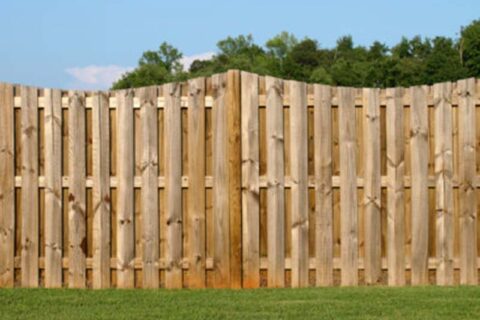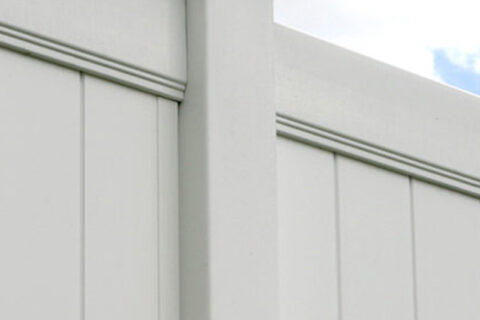7 Tips to Consider When Choosing a Fence for Your Big Dog
Those of us who love and own big dogs understand how fantastic they are. They are like giant, living teddy bears that live with us.
However, we also understand the difficulties that come along with owning a large dog.
For example, big dogs require adequate fencing more so than small dogs. They can jump higher, run faster, bark louder, and cause more destruction than smaller dogs.
Additionally, people tend to be more afraid of big dogs.A large loose dog on the street is a much bigger threat than a small dog.
Therefore, the best fence for dogs really depends on the breed.
Read on for our top 7 tips to consider when choosing a fence for your big dog!
How to Choose the Best Fence for Dogs
While few people choose dogs as pets just to keep them outside all day, dogs do need adequate room to stretch their legs and exercise.
The best fence for dogs is the one that suits their needs.
Before you get a dog, or if you already have one, do a bit of research into their breed. Certain breeds are better escape artists than others.
Some breeds are tunnelers, while others are jumpers or climbers. Alternatively, some breeds make a great one-man wrecking crew and will chew their way through inadequate fencing.
Once you do a bit of investigative work into what your dog is capable of, then it’s time to look into fencing options.
1. Material
First, what type of material do you want your fence to be made out of?
Some fencing is more affordable than others, however, you will have no shortage of options.
Let’s look atthe best fence for dogs based on their material and national cost average
Chain Link
Chain link fencing is your cheapest option. The national average cost is just over $1,900. They do the job and are generally durable and easy to repair.
However, chain link fences offer little in the way of privacy. Even privacy slats and other additions leave much to be desired.
Wood
Wood fencing is the next step up, coming in at an average of $2,700. Wood fences are great for privacy.
However, they don’t hold up super well against the elements. Over time, wood fences require maintenance and sometimes replacement. Although, it’s important to keep in mind that all wood fences aren’t created equally.
Depending on materials and types of wood used, wood fences vary greatly in quality and durability.
Vinyl
Moving up the line, vinyl fencing comes in at $3,600. Vinyl fencing provides great privacy and durability, although they are more expensive to repair.
Also, vinyl fencing is usually white and shows every bit of dirt and grim it accumulates. Therefore, if you want them to appear clean, they require regular maintenance.
Aluminum and Steel
Aluminum or steel fencing is similar in cost to vinyl fencing, around $3,600. Aluminum and steel fencing is incredibly low maintenance as it resists rust, corrosion, fading, and discoloring.
However, this type of fencing doesn’t provide any type of privacy.
Brick and Stone
Brick and Stone fences are beautiful and elegant, but you pay for it. They come in at a national average of $4,500.
They require little maintenance and cleaning and provide fantastic privacy. However, high quality and functionality come at a high price.
2. Height
The second thing to consider when figuring out the best fence for dogs is height.
Is your dog a jumper? How high can he/she jump? Does that include when they’re in heat or smelling a dog that is?
The last question seems silly, but an unfixed male dog who smells a female dog in heat acts significantly out of character.
For example, male dogs near females in heat have shown to not eat for days, break down doors, lash out at owners, and jump 5 to 6-foot fences that would otherwise keep them contained.
3. Visibility
We covered visibility in the materials section of this article. Privacy and visibility are incredibly important, especially if you live in a neighborhood full of other houses or on a busy street.
Dogs are territorial. They think it’s their job to protect the yard. While some dogs are mellow about passersby, many are not.
It’s common for dogs to bark, charge the fence, run the fenceline, and lose their minds anytime they sense a threat. Good news for warding off burglars or other unwanted guests, bad news when they scare the pants off of 80-year-old Marge walking her Pomeranian every evening.
Fences with no visibility significantly cut down on fence aggressiveness. It also protects your dog against retaliatory neighbors or their kids who believe it’s their job to punish your dog for barking.
4. Durability
Big dogs can be destructive, wildly so. When you are looking for the best fence for dogs or a larger breed, think “jail cell.” Not that your dog is a prisoner per se, but that your fence needs to be capable of standing up a being who wants desperately to escape.
Also, consider how the fence is installed, as many dogs resort to digging as a means of escape.
A new fence type on the market is called Trex Fencing. It’s made of an environmentally-friendly composite and boasts greater durability than wood fencing. They’re also built for privacy.
5. Climability
Some large-breed dogs are more agile than others. For example, Great Danes have been known to jump over 5 and 6-foot fences. It’s unlikely, however, that a Mastiff will do the same.
Similarly, some dog breeds are well-accomplished climbers. When searching for the best fence for dogs of a large breed, look at a fence’s liability. The worst fence for climbing dogs is chain link fences because they provide a lot of footholds.
There are DIY solutions for climbing dogs, but why not just get an adequate fence?
6. Area
The best fence for dogs may come down to how much area they need and how much you can afford.
Some large dogs, like Great Danes, make fantastic apartment pets because they are surprisingly lazy. However, all dogs need to get out for a run once or twice a day. A large fenced yard is a great way to let your dog exercise, especially if you can’t take them on walks.
7. Say No to Electric Underground Fences
Finally, while an underground electric fence may seem like a good idea, it’s not.
Many of the escaped dogs picked up by animal control officers are still wearing the shock collars designed to keep them in the yard.
The shock collars are effective for some dogs, yet others will walk right through it. These invisible fences provide no barrier for your dog. They see no reason they can’t run after a squirrel, cat, or other dogs.
Don’t waste your time and money on underground electric fences.
A Plethora of Options
Whatever you decide is the best fence for dogs of a large breed, we can help you build it!
Take a look at our gallery to decide which type of fencing is most appealing to you and your dog. Contact us for any questions and to get a free estimate for your yard!


